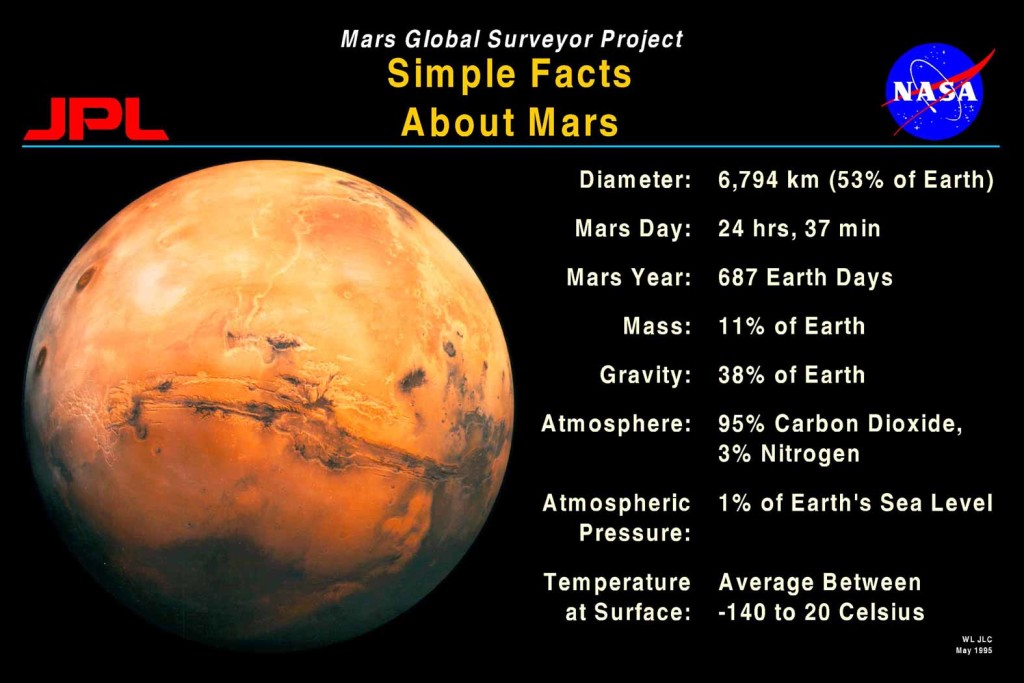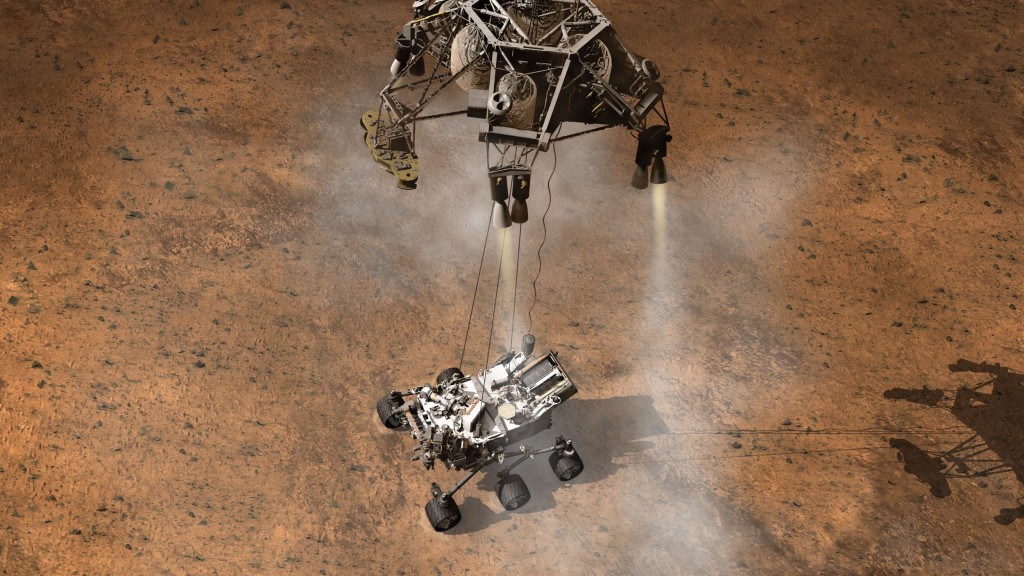Mars: Need To Know Things
1. Named after the Roman god of war, Mars is often called the ‘Red Planet’ due to the iron oxide prevalent on its surface, which gives it a reddish look.2. Mars is the fourth planet from the Sun and the second smallest planet in the Solar System. It has a diameter of about half the Earth, measuring only 6,800 km across. The total mass of Mars is only about 10% the mass of Earth.

Simple Facts About Mars
3. The first telescopic observation of Mars was done by Galileo Galilei, Italian physicist, mathematician, astronomer, and philosopher in 1610. And within a century, astronomers discovered its polar ice caps.
4. Mars has water — today, it is accepted that Mars had abundant water very early in its history.
Observations by the NASA’s Mars Reconnaissance Orbiter have revealed possible flowing water during the warmest months on Mars.
Mars: In Depth
Though details of Mars’ surface are difficult to see from Earth, telescope observations show seasonally changing features and white patches at the poles. For decades, people speculated that bright and dark areas on Mars were patches of vegetation, Mars was a likely place for advanced life forms, and water might exist in the polar caps. When the Mariner 4 spacecraft flew by Mars in 1965, photographs of a bleak, cratered surface shocked many – Mars seemed to be a dead planet. Later missions, however, showed that Mars is a complex planet and holds many mysteries yet to be solved. Chief among them is whether Mars ever had the right conditions to support small life forms called microbes.Mars is a rocky body about half the size of Earth.

Mars Rover Landing Depiction
As with the other terrestrial planets – Mercury, Venus, and Earth – volcanoes, impact craters, crustal movement, and atmospheric conditions such as dust storms have altered the surface of Mars. Mars has two small moons, Phobos and Deimos, that may be captured asteroids. Potato-shaped, they have too little mass for gravity to make them spherical. Phobos, the innermost moon, is heavily cratered, with deep grooves on its surface. Like Earth, Mars experiences seasons due to the tilt of its rotational axis. Mars’ orbit is about 1.5 times farther from the sun than Earth’s and is slightly elliptical, so its distance from the sun changes. That affects the length of Martian seasons, which vary in length. The polar ice caps on Mars grow and recede with the seasons. Layered areas near the poles suggest that the planet’s climate has changed more than once.
Mars: Trivia
Ring Around the Red Planet
Slam Dunk
With about 1/3 the gravity of Earth, anyone on Mars could dunk a basketball in a regulation goal. But the required spacesuit might cut down on your edge.
Speed Brakes
To survive a landing on Mars, a spacecraft must shave three zeroes off its speed in only six minutes — from 12,000 mph (19,000 kph) in space to less than 12 mph (19 kph) at the surface.
Record Rover
The Mars Exploration Rover Opportunity is the longest running rover — ever — in our solar system., Since landing in 2004, it has driven farther than any other rover in history. Opportunity was originally planned to be a 92-day mission.